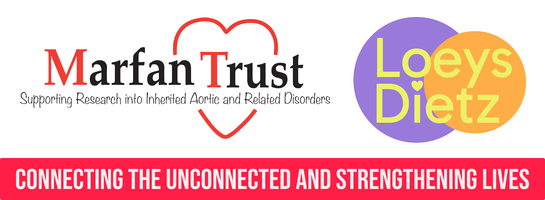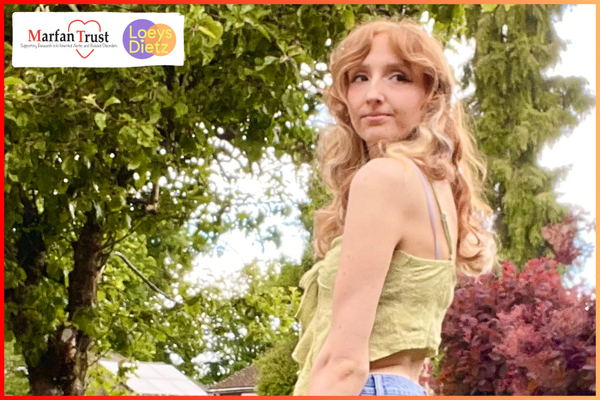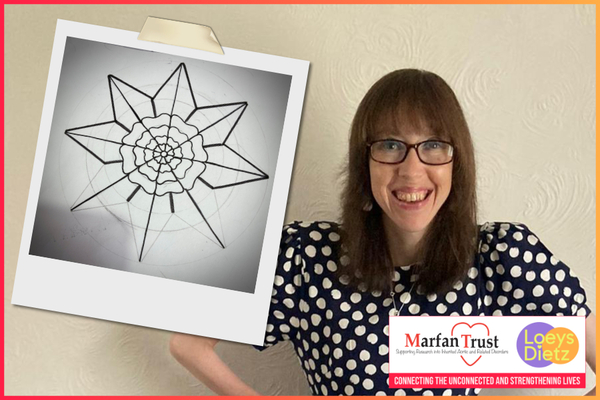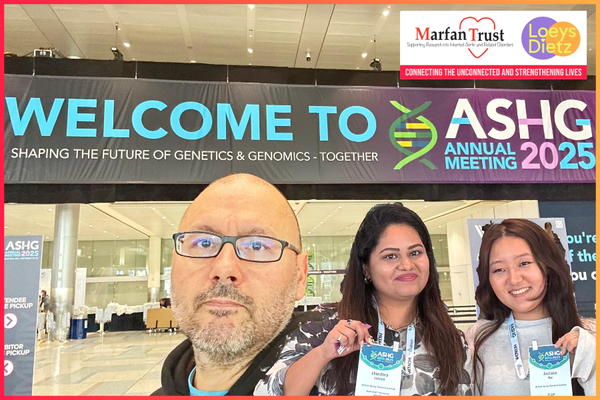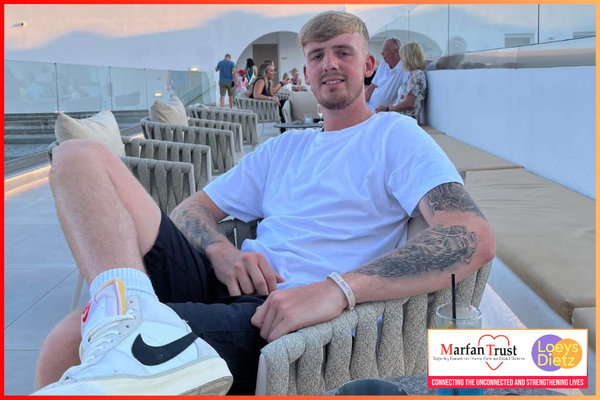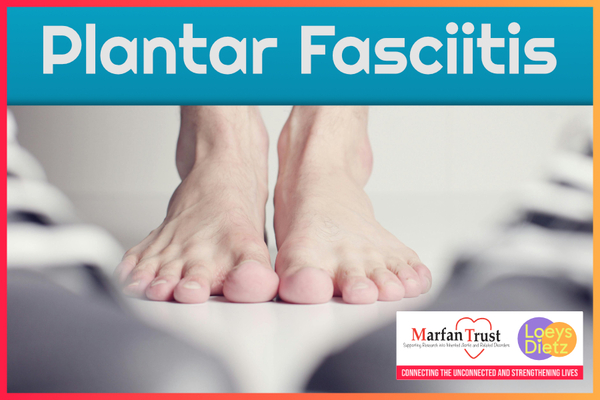Surgery hovered on the distant horizon during Darcy’s adolescence, an abstract idea until it became a conversation, and then suddenly, a reality. She was in Year 9 and scared, not knowing what to expect. Her relatives had undergone aortic root replacement but she was being offered PEARS. Years later, Darcy reflects on her first-hand patient experience in this fascinating article.
by Darcy
If you’ve been told you need to have the PEARS procedure, you’ve probably done the first thing that everyone does upon finding out about any new medical ‘thing’: run to Google. This is exactly what I did, and while I found endless amounts of NHS explanations, interviews with surgeons and scientific articles that my secondary school biology knowledge could NOT help me understand, I found very little in the way of first-hand patient experiences. The aim of this article is to be exactly that and, hopefully, remove some of the mystery around what to expect.
Some of my family and I were diagnosed with Marfan Syndrome in 2013. My uncle, grandmother and mother all had aortic root surgery in that same year, while the rest of us were closely monitored. It wasn’t until 2018 that the PEARS procedure was first mentioned to me, when I was partway through year 9. Everything had mellowed out since our initial diagnosis, and my own surgery wasn’t something I’d really let myself consider. Although my doctors and family were very open with all the information, the whole thing felt out of my control as a teenager, and I was dreading the day it stopped being a conversation and became a real thing I had to do.
Getting Ready
I didn’t receive a date for the surgery until the next year, which gave me some time to adjust to the information and get myself prepared. Something I would advise is not to over-research – misinformation is everywhere, and I definitely ended up needlessly adding to my worries!
As I was beginning to study for my GCSEs at the time, my doctors arranged for me to undergo the procedure at the very end of the academic year, so that most of my recovery time took place over the summer holidays. Although 15-year-old me wasn’t exactly overjoyed at the idea of spending most of the summer recovering rather than going out with friends, it did mean there was much less work to catch up on, so I agreed, if a little reluctantly.
In the weeks before the surgery, I had a few pre-op appointments involving various tests and scans (an MRI, blood tests, height, weight and blood pressure etc). The MRI was used to build a 3D-printed model of my aorta so that the wrap for the surgery could be made to the right size, which I actually still have – I was very interested in biology at the time, so the surgeon thought I’d like it! The appointment was held at the Evelina Children’s Hospital in London, where the procedure was scheduled to take place. I saw the surgeon, who happily answered my ridiculous number of questions, and signed a few consent forms. Once everything was sorted, I spent the next week or so making sure I was rested and well enough for the surgery.
Staying Over
The procedure had been scheduled for the early morning, so my mum and I were given the opportunity to stay in hospital accommodation the night before. If you’ve ever stayed in a hotel, it was very similar to that, but without the room service. There was a shared bathroom down the corridor, a TV in the room and very comfy beds, we were actually quite surprised at how nice it was! The only recommendation I would have is to bring earplugs with you; London has its merits, but the street noise is not one of them.
Voicing Concerns
In the morning, we headed down to the hospital where we were taken to a waiting room, though we didn’t have to wait for particularly long. Very quickly, we were greeted by a couple of doctors, one of which was the anaesthetist, who gave us a rundown of what would happen next and asked if I had any concerns. I would really urge you to say anything and everything you’re worried about at every opportunity, because I am so glad I did. It’s a good idea to tell anyone who will be staying with you or visiting your worries and preferences too, as you might be a little too sleepy to explain while you’re recovering! I’ve always struggled with anxiety surrounding nausea, so I mentioned it to anybody involved. The doctors were very understanding about this and made sure I wasn’t given any medications known to cause nausea wherever possible, they also said they’d give me a double dose of anti-sickness medication which made me feel a lot more relaxed!
We were then taken to a private room so that I could change into a gown – they also asked me to use some antibacterial wipes to help reduce infection risk, which made me feel a bit like a kitchen countertop. Next, we headed into a small, closed corridor that led into the operating room. The anaesthetist explained that he would first give me a sedative, then the anaesthetic itself. I was very worried and admittedly had a bit of a panic here, though there was no need to. He was very patient with me and tried his best to keep me calm - my mum likes to joke that everyone breathed a sigh of relief when I finally went to sleep!
Recovering
Waking up from surgery feels exactly like waking up from any other sleep, though you do feel a little muddled. I was cognizant enough to ask how the surgery went, but had somehow convinced myself the surgeon had broken all of my ribs, which he quickly assured me he hadn’t! I was very thirsty but otherwise felt okay. For the first 1-2 days, I was in the ICU and mostly sleeping. The nurses were kind and attentive, and although I did feel a little nauseous at one point, they very quickly gave me some anti-sickness medication to counteract it. I honestly wish I could have taken some of that home, because it was so quick and so effective I thought it was magic. Once I was moved out of ICU, my mum was allowed to stay on the ward with me, which made me feel much calmer.
Everyone reacts differently to surgery, my body’s reaction seemed to be to sleep it off, profusely. After two or three days, they began to lower my pain medication which made me feel more awake and gave me a bit of an appetite! Hospital food is never great, but most of them have cafés and shops – my advice would be to ask any visitors to grab you anything you’re craving! Yoghurts, milkshakes and fresh fruit were the easiest things for me to manage at first.
When I was well enough, the doctors and nurses began getting me out of bed to move to a chair or for quick walks. It’s uncomfortable at first, but helps you recover more quickly and feel much better in the long run.
Something I hadn’t expected was that hospital wards can be quite loud (I’m blaming American medical TV for making me imagine a luxurious private room)! All the machines like to make a lot of noise, and there’s always somebody moving around or talking. This is another reason to bring earplugs with you if you’re a bit sensitive to sound. It’s also likely that you’ll get woken up during the night so that the nurses can check on you, but they’re very quick and let you get back to sleep as fast as they can.

Going Home
The doctors will want to get you home as soon as it’s safe, but you do have to be patient with your body. Showers and sleep can be difficult for a little while after you’re discharged, but you do start to feel better before you know it! It takes time to build your strength back up and it’s easy to get frustrated if you find yourself unable to do things you could before – personally I found I wasn’t strong enough to lock the back door! It does come back quickly; you just have to give your body the chance to recover.
Things to take with you:
· Hairbrush
· Dry shampoo and deodorant – you might not feel up to showers at first!
· Mints and mouthwash
· Earplugs
· Face wipes
· Mini electric fan – this was a lifesaver in the summer!
· Things to do: books, tech, headphones etc.
· Comfy clothes
Anything else you find comforting.If you are due to have the PEARS procedure, I’m wishing you a speedy recovery!

